#Camera Collecting
Explore tagged Tumblr posts
Text
Polaroid SX-70 Camera
When I was looking over the cameras in my collection and thinking about which camera to write about this week, the Polaroid SX-70, which I have right over my desk, seemed to jump up and say, "My turn this week." I thought about it for a moment and thought, "It's not that old of a camera, but it is."
The Polaroid SX-70 was introduced in 1972, during the era of many "modern" inventions, like the home VCR, floppy discs, and email. It was not too far after the music and pop revolution in the late 1960s, which brought interesting and new designs. Currently, the SX-70 is a 52-year-old camera and, in my opinion, the last camera introduced with a genuinely different and unusual design.
Being a fan of Polaroid from an early age, I remember getting a Polaroid Swinger for Christmas of 1965, just a few months after the camera was introduced. To focus the Swinger, you'd squeeze the focus dial until a "YES" would show up in the viewfinder, telling the photographer the camera was focused and ready to take a photo. That was tremendous and, to this day, a fun innovation of its time.
When the SX-70 was introduced, there was much fanfare, magazine covers, and writing about this revolutionary camera from Polaroid. The SX-70 was officially sold in the Miami area in late 1972 and became nationally available in 1973. It was sold for $180.00 for the camera and $6.90 for the film, with ten photos in each pack.
The interesting thing about the Polaroid SX-70 film was that the batteries that powered the camera were in the film packs, so every time you put a fresh roll of film into the SX-70, you were also putting fresh batteries in the camera. Batteries in the film pack were good unless you tried a pack with depleted batteries or tried out-of-date film where the batteries were dead. At that point, the camera was unusable.
What made this camera unique was its odd and different design and its very slim design. It was an SLR camera with through-the-lens focusing, exposure control, and accessories that would enhance the photo experience, such as a remote shutter cable, tripod mount, close-up lens and diffuser, lens hood, self-timer, and accessory holder. Other companies soon came out with accessory lenses and electronic flash units.
In 1974, due to the success of the original SX-70, with its chrome and tan-colored leather covering, Polaroid introduced lesser-expensive models and kept introducing other models soon after that.
The SX-70 camera was a massive success for Polaroid and gave instant photography a shot in the arm like few I've seen in the photo industry. Kodak would create their version of an instant camera in 1976. Still, Polaroid sued them for patent infringement, which led to Kodak discontinuing production of their line of instant cameras in 1985.
Company History:
The Polaroid Company, founded by Edwin H. Land in 1937, pioneered light-polarizing technology. Originally called the Polaroid Corporation, the company first made waves by producing polarized sunglasses and optical devices. However, its true innovation came in 1947 when Land introduced the first instant camera—an invention that would forever change photography.
Land unveiled the instant camera at a meeting of the Optical Society of America, demonstrating how it could develop photos within minutes. This breakthrough led to the Polaroid Land Camera Model 95 commercial release in 1948. The camera's unique ability to produce finished photographs quickly became a cultural phenomenon, redefining personal photography for decades.
Throughout the 1950s and 60s, Polaroid expanded its product line and refined its instant photography technology. It gained popularity among both amateur photographers and professionals. The introduction of color film in 1963 further solidified Polaroid's position as a dominant force in the camera industry.
Polaroid also became known for its iconic camera designs, such as the SX-70 in 1972—a folding single-lens reflex camera that was both portable and innovative. During this golden era, Polaroid enjoyed tremendous commercial success and was often seen as a symbol of American ingenuity.
However, the rise of digital photography in the late 1990s and early 2000s caused Polaroid to struggle. Despite attempts to adapt, including digital products and partnerships, the company couldn't maintain its market dominance. In 2001, Polaroid filed for bankruptcy and began selling off assets.
The brand saw several changes in ownership over the following years. Yet, in a surprising turn, Polaroid experienced a revival in the late 2000s and 2010s, fueled by nostalgia and a renewed interest in analog photography. The Impossible Project, a group of former Polaroid enthusiasts, acquired the brand's last factory and began producing new instant film. Eventually, this effort led to the relaunch of Polaroid as Polaroid Originals in 2017, and later simply Polaroid.
Today, Polaroid continues to produce instant cameras and film, embracing its vintage roots while appealing to new generations of photographers drawn to the charm and simplicity of instant photography.
My Camera:
My SX-70 camera measures 7" long by 4" wide by 5.5" tall when it is opened and only 1.5" tall when it is collapsed. It weighs only 1 lb. 7.6 oz. and has a 4-element 116mm f8 glass lens. My camera is one of the earlier models because it has the embossed serial number on top of the film chamber. The serial number on my camera is FE3028170DK.
To open the SX-70 camera, place it in the palm of your hand, grip the top ribbed section of the viewfinder, and pull up. This will open the camera and lock it into place. The locking bar is on the left side of the camera. If the camera isn't locked when you pull up on the viewfinder, you can slide the locking bar forward to lock the camera open.
Once the camera is open, it exposes the black rubber bellows built into it. It also exposes the rear viewfinder for focusing, and on the front of the camera, the red shutter release button and the exposure control the camera. I was taught to hold the camera in the palm of my left hand, and with my right hand, I can focus on the camera.
Putting the camera up to your eye and looking through the camera, you'll see a split-image focusing screen. A small black wheel controls the camera's focus on the camera's right side. Turn the black wheel back and forth until the subject looks sharp. The split image focusing allows the photographer to find a vertical item, and when out of focus, the line will be split and together in one line when in focus. The camera can focus as close as 10.4" from the subject.
On the other side of the camera is the exposure control wheel. The camera is auto-metering, which is metered by the opening just below the lighten/darken wheel. Generally, you leave this wheel in the center position with half the white or black portion in the middle.
If you want the following image to be lighter, move the wheel so more of the white is showing. If you want it darker, turn the wheel so that more black is showing. There is no rule of how much to move the wheel for a lighter or darker image. It's all just a guess. The camera shutter can shoot from 1/175 to longer than 10 seconds.
To open the camera to load the film pack, on the right side of the camera is a button with a yellow sticker, and inside that yellow sticker is a "down arrow." Push that button down, and the front door opens to reveal where the film pack fits. The original film packs were color-coded, so you would line up the yellow, black, and blue sections of the film back to the colors on the film chamber and slide the film pack into the camera. You must press it all the way in so the film door can close. Closing the film door with a fresh film pack in the camera will eject the dark slide from the film pack through a small slot in the film door. The camera is ready to take its first photo when the dark slide or cover is ejected. There is a small window on the back of the camera, the frame counter.
When you take a photo and light hits the film, the camera ejects the film through a pair of rollers on the film chamber door. When the film passes through the rollers, they squeeze the chemicals onto the film, and the photo starts to process. These need to be cleaned; otherwise, the photo won't be processed correctly after you take a photo. Another issue that dirty rollers can cause is dots on the photo. The dots are caused by dirt on the rollers, and they press into the photo, and the chemicals can't reach that area, causing white dots throughout the photo.
If you're indoors and there's not enough light to take a photo, a flashbar fits into the slot just above the lens and takes five electronically timed flashes per side of each flashbar. They worked well. All you needed to do was snap the flashbar in the slot, and everything was done for you, except for turning the flashbar after five flash photos.
The electronic cable release attaches to two small holes on the camera's right side. The accessory tripod mount would fit on the bottom of the camera, and the accessory holder and close-up lenses would fit into the flashbar holder.
To close the camera, slide the locking bar back toward its arrow. The camera will start to close. Press the top down into the body, and the camera will click into the closed position.
A common issue with the SX-70 is the mirror gets locked in the up position, and the camera won't close all the way. You can also tell when this happens when you look through the viewfinder; there is nothing to look at, and the finder is black. The lock-up can be caused by a lack of power from the battery or the film not getting ejected properly, but there's not enough power to cycle the camera. Something you can do to correct this is a bit tricky and not too difficult, but it means taking a small and fragile piece of plastic off the camera to expose the gearing system of the camera. If you're nervous or think you'll break the piece of plastic, DON'T try it.
On the right side, by the film release button, is a small and thin piece of plastic that you can CAREFULLY pull up at the front of the plastic piece. Some are easy to come off, and some are very tight, so please be careful. Once the piece is off, you can see the gears in the camera's body. The front gear can be turned, which will bring down the mirror system allowing you to view through the camera and cocking the camera. Many videos on YouTube show this process if you are interested. Once the camera's mirror comes down, you can put the piece of plastic back and snap it into place. You'll need a new and fresh film pack to ensure the camera is in good working condition.
My images:
Unfortunately, I didn't buy film before I wanted to write about this camera, and when I looked to purchase some, they were out of stock, so I'm forced to show photos from the late 1970s or early 80s.
Here are some of the family photos from the SX-70 camera.
Conclusion:
The SX-70 brings back many fond memories we had with family and co-workers. It's one of the classic cameras made in the 20th century, and I am thrilled to have a good early model in my collection.
One of the real advantages of the original SX-70 film was the ability to manipulate the images during the processing, which took a minute or so. We'd take different thicknesses of knitting needles and swirl the chemicals around, which would cause a flow in the photo, which was very artistic. The new film doesn't allow for this creativity.
Thank you for taking a few minutes from your schedule to read about this wonder camera from the 1970s.
Please feel free to email me if you have questions or concerns. Until next week, please be safe.
Click on the link to read about the cameras reviewed.
#Polaroid#Polaroid sx-70#SX-70#Polaroid SX-70#Polaroid Instant camera#Polaroid Film#SX-70 film#Dr. Land#Land Camera#Instant photography#Revolutionary Camera#Camera from the 1970s#1970s#1970s camera#Original SX-70#Modern design#Popular camera#cameras from the past#Cameras#Camera#camera#Camera for fun#camera collecting#Camera Collecting#camera collecting blog#Cameras from USA#USA camera#made in america#Made in America#American camera
3 notes
·
View notes
Text


MONKEY MAN (2024) dir. Dev Patel
#stashed to dev patel looking forlornly to the camera collection#monkey man#films#actionedit#filmedit#dev patel#devpateledit#userbells#meg im tagging u bc i need u to understand#kumi gifs*#there will be more monkey man sets I prommy
8K notes
·
View notes
Text

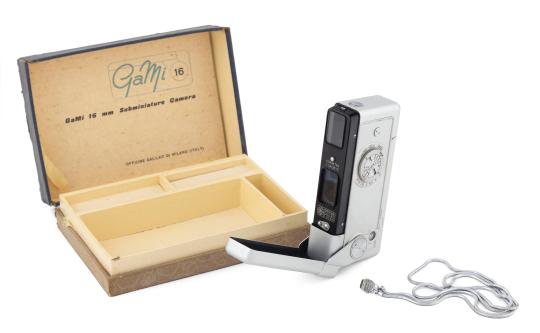
GaMi 16 Subminiature Camera with Box, 1953
Source: East Dennis, MA Eldred's
"Precision In a Nutshell" , L.A. Mannheim, Photoguide Magazine, London, August 1954:
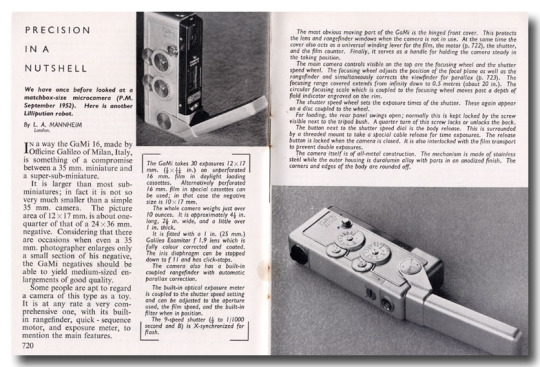

"Jason Schneider On Camera Collecting, Book Two" 1982:

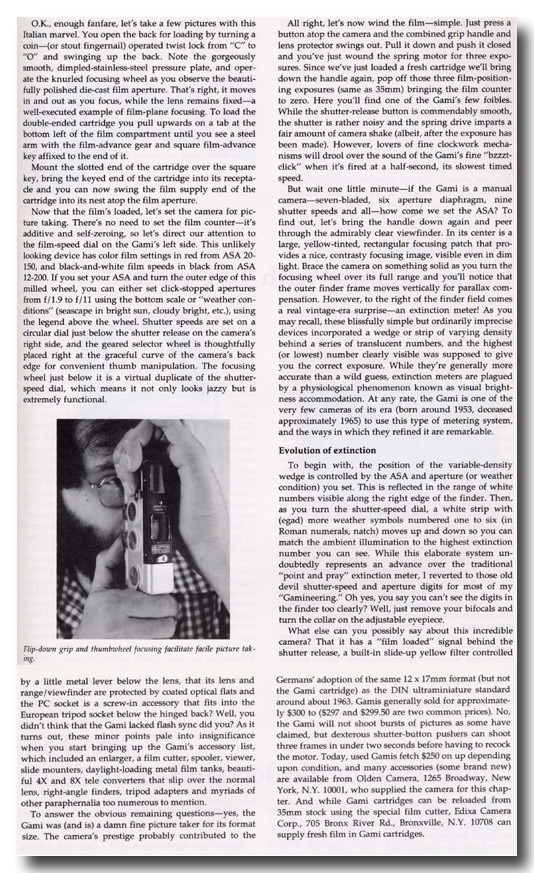
#subminiature#miniature#camera#GaMi#camera collecting#italian#made in italy#1950s#auction#online#auctioned
0 notes
Text



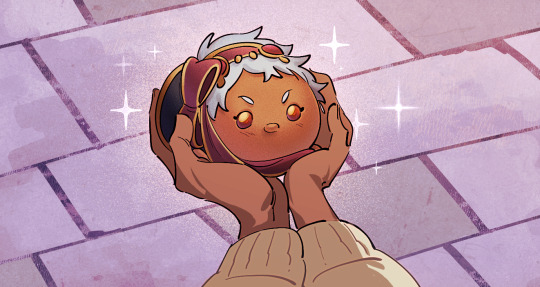

Kalim's tsum vignette was fun (I lost my mind multiple times)
#the camera zooming in on jamil not once but twice during part 3 had me crying afksfjkgks why are they like this#jamil viper#kalim al asim#twst#twisted wonderland#scarabia#brohemeart#it was cute seeing them on the same page about the baby birds though; i wasnt expecting to be so endeared to this vignette#collecting their sentimental lines like pretty rocks
7K notes
·
View notes
Text

#game boy color#game boy camera#game boy pocket printer#game boy camera collection#peripherals#hardware#tech#retro gaming#nintendo#nintendo aesthetic#pikachu#pokémon series#pocket monsters#90s#2000s#photography#GBC#game boy#Big N
2K notes
·
View notes
Note
As cameras becomes more normalized (Sarah Bernhardt encouraging it, grifters on the rise, young artists using it), I wanna express how I will never turn to it because it fundamentally bores me to my core. There is no reason for me to want to use cameras because I will never want to give up my autonomy in creating art. I never want to become reliant on an inhuman object for expression, least of all if that object is created and controlled by manufacturing companies. I paint not because I want a painting but because I love the process of painting. So even in a future where everyone’s accepted it, I’m never gonna sway on this.
if i have to explain to you that using a camera to take a picture is not the same as using generative ai to generate an image then you are a fucking moron.
#ask me#anon#no more patience for this#i've heard this for the past 2 years#“an object created and controlled by companies” anon the company cannot barge into your home and take your camera away#or randomly change how it works on a whim. you OWN the camera that's the whole POINT#the entire point of a camera is that i can control it and my body to produce art. photography is one of the most PHYSICAL forms of artmakin#you have to communicate with your space and subjects and be conscious of your position in a physical world.#that's what makes a camera a tool. generative ai (if used wholesale) is not a tool because it's not an implement that helps you#do a task. it just does the task for you. you wouldn't call a microwave a “tool”#but most importantly a camera captures a REPRESENTATION of reality. it captures a specific irreproducible moment and all its data#read Roland Barthes: Studium & Punctum#generative ai creates an algorithmic IMITATION of reality. it isn't truth. it's the average of truths.#while conceptually that's interesting (if we wanna get into media theory) but that alone should tell you why a camera and ai aren't the sam#ai is incomparable to all previous mediums of art because no medium has ever solely relied on generative automation for its creation#no medium of art has also been so thoroughly constructed to be merged into online digital surveillance capitalism#so reliant on the collection and commodification of personal information for production#if you think using a camera is “automation” you have worms in your brain and you need to see a doctor#if you continue to deny that ai is an apparatus of tech capitalism and is being weaponized against you the consumer you're delusional#the fact that SO many tumblr lefists are ready to defend ai while talking about smashing the surveillance state is baffling to me#and their defense is always “well i don't engage in systems that would make me vulnerable to ai so if you own an apple phone that's on you”#you aren't a communist you're just self-centered
630 notes
·
View notes
Text

#00s core#2000s core#00s#2000s aesthetic#early 2000s#2000s style#y2k#sony#walkman#cd walkman#cds#physical media#compact disc#cd collection#silver#y2k aesthetic#y2k nostalgia#digital camera#2001#2002#2003#flickr#2000s girl#so cool#2000s kids#childhood memories#2000s nostalgia
307 notes
·
View notes
Text


231 notes
·
View notes
Text
I don't know how to explain it exactly, but Danny phantom (the show)'s identity and tone problems make the whole viewing experience kind of uncanny, like it's forever trapped between the two entirely different genres of wacky superhero comedy and serial horror thriller, as if it was both simultaneously two incompatible things at the same time,
#Danny phantom#☠️#This isn't a vague of anyone except maybe butch Hartman. I just think the whiplash experience of watching the show is. Fucking ridiculous.#Danny phantom has captured the collective imagination precisely because it will present the most horrifying concept#and then sometimes try to mug at the camera mcu style like 'well THAT just happened' and the results vary wildly.
525 notes
·
View notes
Text
The Ishigamis and The Gifts of Science
Dr. Stone is a love letter to humanity and its sciences. The main character, Senku, often acts averse to all forms of affection, and the only love he doesn't deny is his love for science. But Senku is so so full of love. He just expresses it in a way other than physical touch or words of affirmation. He gives.
But let's go back to the one who taught him so– Byakuya Ishigami, his father. The love of Senku's life.

Byakuya is introduced in the tenth chapter of the manga as a dotting father who sells his car to present Senku with scientific instruments he will need for a more efficient research. This car is Byakuya's means of transportation, and given that he is crying and shaking in this scene, it could not have been easy for him to lose it. But his love for Senku is so big, that he wants to support his son's passion even if it means sacrificing a great convenience for him.
And Senku? Senku truly fell in love with science at this moment.

If there is anything that Senku is, he is Byakuya Ishigami's son through and through. They may seem like two very different people, as Byakuya is an openly affectionate guy while Senku is more closed off with showing his true emotions. But Senku takes more from Byakuya than not, and one of them is by showing his love and/or care for others through giving the gifts of science.
And it starts with Byakuya.
[Bodysuit Acquired!]

Byakuya had failed his first attempt at being an astronaut ten years back, but he doesn't give up and tries again. Senku then creates a bodysuit that manipulates muscle movement to help Byakuya pass his swimming test. And while the bodysuit doesn't quite help Byakuya to swim, the thought Senku had put into it had motivated Byakuya more than ever to pass the test. This is one of the fundamentals of gifting– sometimes, it really is the thought behind it that matters.
This motivation is what Byakuya credits during his interview with JAXA for passing the tests. He understands that Senku might not have given him any words of encouragement, but this bodysuit was all the words that were needed between them. Senku wants Byakuya to achieve his dreams just as badly. It's the way Senku shows his love for his father.
And it's the way Senku shows his love for others too.
[Glasses Acquired!]

One of the primitive aspects of the Ishigami village is that it considers bad eyesight as a type of "disease". Fuzzy disease, to be exact.
Suika wears a melon mask at all times to help clear her eyesight, which Senku later reveals is due to the pinhole effect. She, however, has never told Senku or the others about having the fuzzy disease. Senku himself notes how odd it is for her to wear a melon around, and confronts her about it once he decides to create glass. This is one of the most beautiful scenes in Dr. Stone, as Suika finds out that her disease was never a disease, and is finally able to see as clearly as the others. Senku basically gives her perfect eyesight, something she didn't even know was possible before.
[Antibiotics Acquired!]
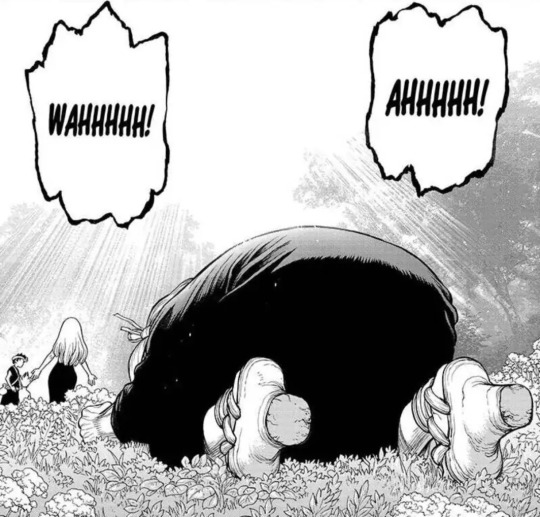
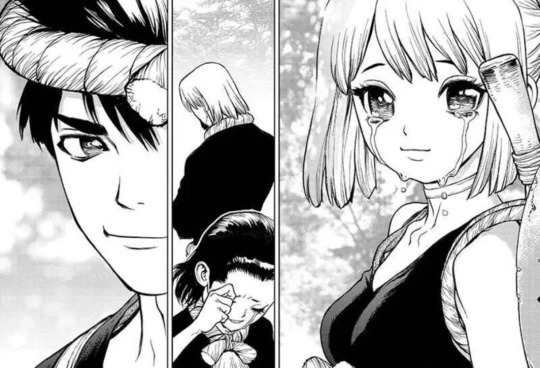
One of the most beloved people in this village is the priestess, Ruri. Two of Senku's new friends, Kohaku and Chrome are deeply affected by her unknown fatal disease. Senku is such a person who would help a stranger even if there is no benefit to do so (though he would never admit to it), what more a person who his new friends truly love and care about. He cures Ruri of pneumonia, giving her a chance to live a life without the worry of it being her last day every day.
[Cola Acquired!]

Senku forms an alliance with Gen, who plays the role of Tsukasa's spy, for the promise of a bottle of cola. Both Senku and Gen are aware that the cola is only a front for Gen's loyalty to Senku and the Kingdom of Science, for Gen needs his superficial reputation as a comfort and cannot simply join them if there is no personal benefit for him to do so.
This cola is also the first gift post-petrification that Senku brands himself on, probably because it represents the first gift that is not out of necessity and leans toward a comfort/luxury that they both used to enjoy in the modern world.
For a modern man such as Gen, drinking his favourite soda in the stone world might have been one of the happiest days in his life.
[Cotton Candy Acquired!]

Senku cares about people so much, even if the people in question have tried to kill him. Senku sees Homura as a soldier who is merely following the orders given by her leader, but he also sees the Homura as a lonesome girl sitting by herself on trees day and night.
As usual, Senku hides his kindness and care by showing an evil ulterior motive, such as turning Homura to their side using the cotton candy, but Ruri points out that this is a facade. Similarly to Gen, a person with such an ego is unable to seem as if he is doing something good out of the kindness of his heart.
[Stove Acquired!]

As winter approaches, the elders in the village are worried about losing people to the cold. Senku hears about this and creates a stove which has a multi-purpose of cooking and also radiating heat for the people to stave off the coldness of winter. And speaking of winter...
[Christmas Acquired!]

Senku hangs up lights in the tree for the "light bulb test" on a random night. Except the date isn't random at all and he drops enough hints for Gen to catch on that it is the night of Christmas. The significance of the day is only appreciated by Gen and himself, as they are the only modern timers in the village. It is for the sake of nostalgia, but Senku would rather be caught dead than admit that he is a sentimental guy with such irrational feelings.
And well, it all comes back to that scene with Byakuya, doesn't it? If you recall, Byakuya calls himself "Santa" while giving the scientific presents to the young Senku. This indicates Senku received them during Christmas. Which means... Christmas is a sentimental day to Senku and his father. An anniversary of Senku receiving his Christmas presents from Byakuya, which led to his deeper dive into his science obsession. The beginning of it all, one would say.
And even though he's dead and buried, Byakuya never stops giving. He gives Senku the Ishigami village to provide Senku with allies. He gives Senku Lillian's music, because he believes in the light of music and understands the importance of media to society. He collects platinum till his last breath, because he believes that Senku will need it someday. Byakuya keeps on giving to Senku, because his love for his son is so huge and unconditional. And because he promised.
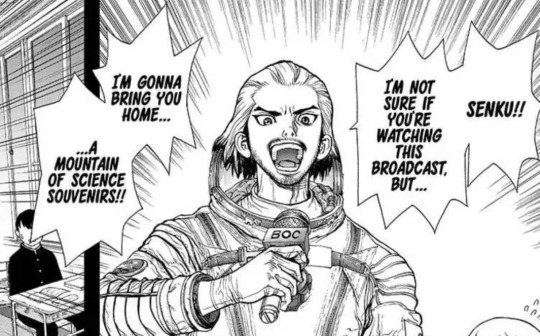
Surely, there is no greater love in the manga than Byakuya's love for his son and Senku's love for his father. Byakuya could easily win ten billion best father awards... well, not like there's much competition for that in shounen mangas.
#wrote this at 7am and went back to sleep immediately#and now that im wide awake again and rereading it it isnt that bad so erm ok hit post!#anyways i just rly rly rly love senkus and byakuyas relationship ok#the times ive cried for dr stone? ALWAYS FOR THEM#byakuya collecting platinum moment and dying...#i have lots of thoughts abt senku and byakuya and senkus love for his dad#the way the manga ended... it rly shows how senku is still always thinking abt his dad first and foremost#the love of a parent and how their children will always be just a little kid to them...#lots of ellipsis in these tags lmao#theres actually even more moments of senku giving stuff to others ofc#like giving tsukasa literal LIFE and the camera to minami yada yada#but yea i think these points r enough to show that senku rly invents things for ppl to show affection#like sure he enjoys creating science shit#but he also cares abt them and it's why he does it#i would say that gift giving is his love language or whatever#but ive heard that that love language stuff is bs so idk anymore#ask gen abt mentalism lore not me#wait no even if it was bs gen would not care and would have it in his psychology book#it's senku who would get triggered methinks#anyways lets just assume it's not bs and well#theres that thing where u make another person feel appreciated not based on ur own love language but based on THEIR love language#so like for example to make senku feel loved u should give him presents#and so far i think ive noticed three ppl doing this...? byakuya yuzuriha and gen#maybe theres more but i cant think of anyone else now#well might make another post in the future on this idk. or ill just reblog this one to continue#senku ishigami#byakuya ishigami#dr stone#dcst#long post
254 notes
·
View notes
Text
Capta Camera
When visiting another country, I research to find out if there are cameras made in that country that I'm unaware of. If I'm fortunate enough to find one, I can add it to my collection. We were fortunate enough to plan a trip to Barcelona last month, as my wife had a conference to attend and participate in, so I planned on tagging along on the journey to Spain.
I had a few objectives for this trip, as I'd have time on my own. These objectives were to use my new Fujifilm camera, shoot black and white with my Widelux F7 camera, and attend local flea markets to find Spanish cameras that I wasn't aware of. All three objectives were accomplished.
At the local flea market in Barcelona, I stumbled upon a hidden gem-a relatively unknown Spanish Bakelite camera, a Capta camera in a tattered case. The thrill of this discovery was palpable. The camera was in good working condition, took 120 film, and had a 6x4.5 format. I didn't see any chips in the Bakelite. For a decent price, I eagerly made the purchase, already envisioning the stories I would share about this Spanish wonder.
Upon returning home, I eagerly unpacked the Capta camera. Despite its better-than-expected condition, it was covered in a layer of grime, likely from the leather dust of the case. I cleaned the camera with a soft cloth, Q-Tips, and lightly soapy water, restoring its original charm. With the camera now sparkling, I was ready to delve into its history and put it to use.
History:
Capta was the brainchild of Valencian pictorialism photographer, Julio Matutano Benedito. Born into a modest family in 1892, he had a passion for art from an early age. At the age of 12, he began his apprenticeship with a local sculptor. Between the ages of 14 and 20, he attended evening classes for artistic drawing at the School of Craftsmen in Valencia.
He was an accomplished engraver with his shop in Valencia until he took up photography in 1923, where he honed his craft by taking photos of his family. In 1928, Julio Matutano and a group of his friends formed Foto Club Valencia. Between 1928 and 1936, Julio Matutano won several national and international awards for his photography.
In 1935, Julio Matutano changed careers. He embarked on designing and manufacturing a new camera company in Spain. His first creation, the Nerva, was a testament to his innovative spirit. This camera, made from stamped aluminum, used 127 film with a 3x4cm format and featured a German Rodenstock lens. It was a true pioneer in its time, selling for 13 pesetas, equivalent to approximately $35.00 in today's dollars.
In 1942, he designed a wooden camera with a SACO (Sociedad Anónima de Cristales Ópticos) lens, which took 127 film in a 6x4.5 format, named PERFECTA. I couldn't find this camera anywhere, except for the German Perfecta. If you have any information on it, please let me know.
Julio Matutano registered the CAPTA trademark in 1944. That year, he also designed and introduced the Capta I, a Bakelite camera manufactured by Industrias Sintéticas Abril in Barcelona. The camera featured an optical viewfinder on top and used 120 film with a 6x4.5 format. At this time, the Capta sold for 101 pesetas. Later in 1944, Capta introduced the Baby Capta. I created a smaller version of the Capta, which I named the Baby Capta, featuring a metal face and capable of taking 127 film in a 6x4.4 format. This camera was marketed for a younger audience.
The Captaflex was designed in 1947. The Captaflex was a Bakelite camera that took 120-size film with an unusual 52.5 x 52.5 cm image area (6x6) format. The camera had a 90mm f/8.5 lens and a helical screw, variable focus lens capable of focusing from 1.5 meters to infinity. The camera bears a strong resemblance to the British-made Ensign Ful-Vue camera. Unfortunately, Julio Matutano died in 1947 before the camera came to market, but his two sons, Julio and Vincente, who had been working in the company since they were 12 and 13. Both sons were artists when they took over the company and moved it to Valencia. From then on, the company's logo was JVM, and the Captaflex was released in 1948 for 375 pesetas.
The brothers expanded the business during the 1950s, as the resurgence of photography following World War II gained momentum. In 1952, the Capta II was introduced, featuring a coated lens, a focusable lens, and an accessory close-up lens.
Capta's first 35mm camera, the Capta 35, was introduced in 1953. A 24x24 format camera made of injected aluminum alloy with three shutter speeds and a rectilinear lens. In 1955, the company expanded into other areas and introduced the Capta-Movie. In 1956, Capta introduced the Universal Tank, a film developing tank compatible with 35mm, 127, and 120 films.
After 1959, the collaboration with Gaspar Mampel ended, and Capta started selling all its products directly to the public. During this time, Capta introduces a microscope, an enlarger, and several other photo-related products. In 1966, the company ceased all production and closed due to extreme financial difficulties.
My Camera:
My Capta camera is 5" wide by 4" tall by 2.75" deep and weighs 10.2 oz without the fitted leather case. The Capta is a straightforward camera with a fixed focus, meniscus lens, and a basic optical viewfinder on top. The camera is a 6x4.5 vertical format camera, and it also has a tripod socket on the bottom.
For shutter speeds, the Capta camera has either "I" for instant, or "P" for timed exposures. These are set by pulling out or pressing in a metal bar that sets the shutter's capability, which is on the right side, below the lens. According to my shutter tester, the shutter speed is 1/40 for instant exposures. The shutter release is above the lens at an approximate 11:00 position, and above the "CAPTA" name on the front of the camera. A shutter release cable can be connected to the shutter release for timed exposures.
To load the camera with film, the back is held to the body with friction. There is no locking mechanism on the camera that secures the back onto the body. On the side of the camera are two small tabs. Push these two tabs apart, and the back separates from the camera body, exposing the area where you load the film. When the camera back is off the body, and you're ready to load film into it. There are three "wings" that can be pulled up to insert the film. These wings make it easier to load the film as opposed to trying to jam the film roll into one of the sides of the camera. There was an interesting empty spool in the camera from a film manufacturer I wasn't aware of. The spool is from Infonal, a Spanish film manufacturer in Barcelona.
The side with the take up spool and winding knob only has one wing that lifts to help load the film. Loading the empty spool is a bit more challenging, as the winding knob doesn't lift to assist with loading the empty spool. After a bit of wiggling, the take-up spool fit into the correct position. Once the film is in the camera, all you need to do is press the back onto the body, and friction hold the back in position.
The red window on the back of the camera seemed low for the numbers on my roll of film. Still, I was able to see the numbers as they passed and stopped at the appropriate places to capture the whole roll of images on the film.
My Results:
I loaded a roll of T-Max 100 film into the camera and took it for a walk through the neighborhood. I should have given the camera one more Spanish experience by purchasing a roll of 120 film at Casanova Camera in Barcelona and trying it out there; unfortunately, I didn't think of it, so I was forced to use the camera in my neighborhood.
After developing the negatives, I was pleasantly surprised by the results. While the images were relatively sharp in the center, the fall-off of sharpness is rapid as you move to the outer portions of the image, making this a wonderful Lomography camera. It almost has a very dreamy effect on the outer edges which I personally like.
Conclusion:
The camera was enjoyable to photograph with. Using the camera was really applying photography's basic rules, which include ensuring the sun is behind you, framing the image in the viewfinder, pressing the shutter release, and winding to the next frame. In today's world, we'd call this a "point and shoot" camera, as it has no settings. Am I taking photographs or snapshots? Does this make it better or worse? That could be a topic for discussion on another day.
My trip to Barcelona was a successful one. I photographed many beautiful areas of the town, uploaded my favorite Widelux Images of Barcelona, and purchased a relatively unknown and simple Spanish camera to add to my collection.
Click on the link to see other cameras I've reviewed from my collection.
If you're interested in older and collectible cameras, I do have a store on eBay, Cuny's Camera and Photo, where I sell cameras, lenses, and other camera items.
I'd love to hear from you. If you have a question, comment, or concern, please don't hesitate to contact me.
Thank you for taking the time to read about this little known Spanish camera.
Until next week, please be safe.
#camera#camera collecting#Cameras from Spain#Spain#Barcelona#Spanish camera#Capta#Capta camera#Capta bakeite camera#Bakelite#Bakelite Camera#film#film photography#Film#Film maker#film shooter#film camera#film camera collector#film camera collectors#film in camera#film in old camera#fun with film#120#120 camera#120 film#120 film camera#120 spanish camera#120 camera from Spain#Spanish film camera#Julio Matutano
0 notes
Text






forest 01
next
#dimension 20#fantasy high#fantasy high sophomore year#fhsy#riz gukgak#baron from the baronies#ask to tag#fh class quangle#class swap! bard!riz u know da drill#if u ask abt an update schedule for this: 1/don't 2/it gets figured out once I figure it out#tbh I don't think of this as like. a Comic comic at all. if anything it'll be a collection of comics. a stack of notes. a pack of doodles#a glimpse into my actual sketchbook that's used straight up only to figure out designs n draw specbio creatures#for now I just think since riz is dipping into photojournalism here baron should also get a camera :]
608 notes
·
View notes
Text







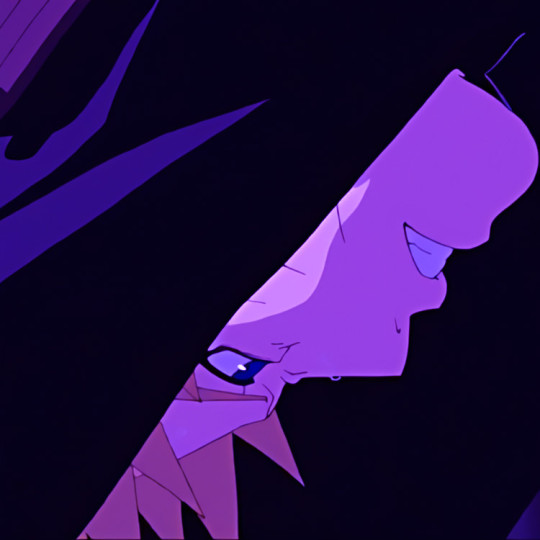
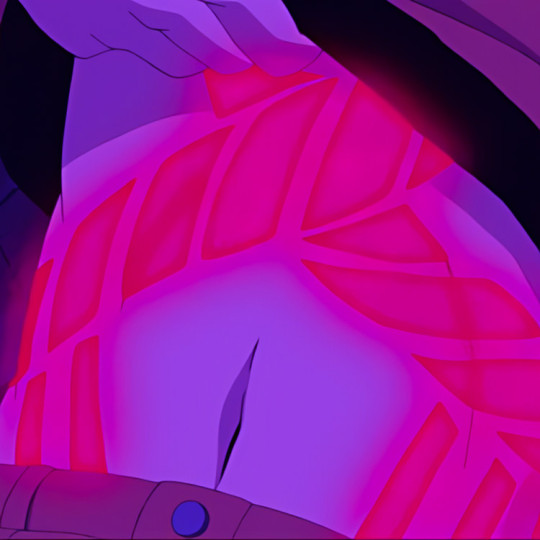













🍥🍅 deep end // sasunaru layout 🍅🍥
#sasunaru#narusasu#narusasunaru#sasunarusasu#sasunaru layouts#sasunaru icons#sasunaru edit#sasuke x naruto#naruto x sasuke#naruto#sasuke#naruto uzumaki#sasuke uchiha#sasuke uchiha icons#naruto uzumaki icons#naruto icons#sasuke icons#anime#tarriel rae#aesthetic#anime edit#anime icons#aesthetic icons#naruto shippuden#icons#anime layouts#naruto layout#made this icon/gif set along with the original layout I posted and its been sitting around in my camera roll collecting dust#figured why not just post this one too since I liked it#so here ya go! hope u enjoy! <3
163 notes
·
View notes
Text



sneak peek inside my bag│˶˙ᵕ˙˶)꜆ so many lil trinkets!
#bag#paul frank#trinkets#keychains#collection#vintage collection#daikin#tamagotchi#tamablr#monkey#pocket critter#objects#y2k#y2k nostalgia#y2kcore#kidcore#vintage collector#pinky monkey#neo licca#licca#phone charms#vintage charms#mobile charms#digicam#digital camera
456 notes
·
View notes
Text





[ID: Several drawings of Dipper and Mabel Pines at various ages, including older and slightly younger than canon.
Image 1: A grinning Mabel with a side shave, and another Mabel with an undercut; Mabel dancing; posing with heart shaped sunglasses and Waddles; carrying a pig-shaped purse; knitting; taking a nap and wearing oversized hiking boots.
Image 2: Dipper carrying a video camera; lying on his back reading; wearing Wendy's trapper hat and a flannel; wearing Mabel's heart shaped sunglasses with stickers on his face.
Image 3: Mabel in her early twenties, wearing boots, shorts, and an oversized jacket. Her hair is short and half pulled into a bun. She has tattoo sleeves on both her legs and lots of jewelry.
Image 4: Mabel with her hair in braids drinking iced tea; Dipper playing a handheld video game; Mabel posing to show that she's wearing a ton of silly Bandz.
Image 5: Slightly older Dipper playing a handheld game that looks more like a Switch, and Dipper chewing on a chewy necklace. An arrow points at him, reading "Mabel's plan to save her pens". End ID.]
back at it again with photos of art i did on post it notes at work. this time: the kids!
sorry that the balance is so skewed, dipper. i had fewer outfit ideas for you
#gravity falls#mabel pines#dipper pines#my art#i might actually go back and finish the one of like 20ish year old mabel#the doodle does not sufficiently capture my vision for her tattoos or her outfit#i drew dipper playing with a switch even though the switch didnt come out until he would have been like 17 and im very sorry about that#also i know in my soul that a couple years pre canon mabel had the biggest collection of silly bandz to exist.#possibly she still has them depending on how long she sticks with trends that she likes. she seems like she Commits to me#anyway as usual sorry about the quality these are photos and i dont have any good cameras
88 notes
·
View notes
